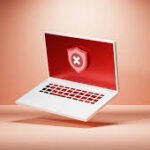In modern life, our laptops, smartphones, and even smart home applications are deeply connected through wireless technology. With so much info being shared across networks, the danger of cybercriminals and programmers trying to steal your data is a real concern. To avoid wholesale fraud and potential financial losses, it’s crucial to implement better approaches to ensure protection. As an individual, arranging simple yet effective security measures can transform your digital experience into a worry-free, hassle-free, and safe journey. From keeping up with the latest security updates to exploring ways to protect information, these things will guide you toward a secure environment, preventing any stress or ruins caused by compromised data.
What is Wireless Technology?
Wireless technology has become a key part of our daily lives, allowing devices to connect and exchange information without the need for actual physical links. This innovation powers gadgets like cell phones, Bluetooth accessories, and Wi-Fi routers, helping us access remote networks and interact with data effortlessly. Whether at home or on the go, this technology is critical for maintaining the seamless flow of information we rely on. It empowers individuals to trade data across devices and stay connected, removing the requirement for traditional wired connections.
However, with this convenience comes the need to be vigilant about protecting critical data. Wireless networks are often prone to risks like unauthorized access, eavesdropping, and vulnerabilities that expose information to potential threats. Using strong passwords, regularly updating your encryption software, and applying two-factor authentication are all best practices to ensure privacy and maintain trust in the networks you use. Being aware of these challenges and consistently monitoring for suspicious activity can help safeguard your personal data, reducing the chance of identity theft or financial losses.
What are the Common Risks Associated with Wireless Technology?
When using wireless technology, you’re exposed to several common threats, such as unauthorized access, data interception, and malware attacks. These risks can compromise your sensitive information if you don’t implement effective security measures. To protect your data, it’s essential to stay proactive in maintaining security and keeping your devices and networks safeguarded against these vulnerabilities.
Unauthorized Access
Cybercriminals often exploit unsafe Wi-Fi networks to gain unauthorized access to sensitive data like credit card numbers and individual messages. Without proper encryption or using protected networks, your info can easily be pinched, leaving you vulnerable to serious intimidations. Ensuring that your network is secure helps defend against these threats and protects vital substructures from being compromised.
Data Interception and Eavesdropping
Cybercriminals can tune into risky Wi-Fi networks to catch sensitive information like charge card numbers and individual messages being communicated. This inconspicuous method allows data to be taken without users realizing it. Utilizing encryption and connecting only to got networks can assist in shielding your information and protect against these dangers.
Malware and Viruses
Malware and viruses are pernicious programs designed to enter your gadget and take data or ruin files. They often infiltrate through downloads, email attachments, or infected websites and can even assume control of your system. Installing antivirus software is crucial to expect malware from causing damage, and taking care to stay away from dubious downloads can protect your device from these illnesses.
Man-In-The-Middle Attacks
A Man-In-The-Middle (MITM) attack occurs when an attacker secretively blocks and modifies transfers or messages, allowing them to take delicate data. This often happens over public Wi-Fi organizations, where the aggressor can catch information without detection. Utilizing a Virtual Private Network (VPN) is essential for getting your association and helps safeguard data during online meetings or when debating sensitive matters.

How Can You Protect Your Information When Using Wireless Technology? Protective Measures and Best Practices
Securing Wireless Networks
To safeguard your Wi-Fi network, it’s crucial to use strong and unique passwords that aren’t guessable. Implementing the newest encryption standard, like WPA3, provides an excellent layer of security, making it harder for hackers to sidestep defenses. Ensure you modify the default SSID and change the settings on your router to something more indisputable for further protection. These steps help keep your devices and information safe from attacks.
Protecting Devices
Ensuring protection when using wireless technology begins with regularly updating your device’s software and firmware. These updates not only include new features but also critical security patches that help eliminate potential threats such as malware, bugs, and other harmful intrusions. Always ensure that antivirus software is properly installed and updated to keep your device safe. Regular maintenance and notice of available patches can confirm your device is running successfully. By staying on top of these tasks, you effectively defend your device from threats.
For an extra layer of security, using virtual private networks (VPN) is key. A VPN encrypts your internet connection, protecting your data from hackers, especially when using public networks. It’s also important to disable automatic connection to unfamiliar Wi-Fi networks to avoid accidental connections that might expose your device to indiscreet or unsafe networks. Turning off this auto-joining feature will protect you from unintentionally joining risky networks and help maintain your security in potentially vulnerable environments within the community.
Safe Usage Practices
When using public Wi-Fi networks, it’s important to avoid accessing sensitive information like banking details or personal emails. These networks are typically less safe and can expose your sensitive data to unauthorized users. One of the key responsibilities when dealing with online investment or movement of any private information is ensuring you connect through secure networks. Public networks come with fewer safe options, and sticking to trusted sources for your wireless connections can help keep your data protected.
To further enhance your security, make sure to educate yourself and other users on phishing and social engineering scams. These tactics often use phishing emails or manufacturing fake scenarios to trick individuals into giving away their personal information. Always be conscious of doubtful links and confirm the authenticity of the source before sharing any individual data. Additionally, using multi-factor authentication (MFA) adds an additional layer of security by requiring a password along with a verification code sent to your phone, offering more robust protection in the wireless world.
Advanced Security Measures
To enhance data security against cyber threats, adopting innovative security procedures is essential. Implementing key approaches like encryption and multifactor authentication adds an extra layer of safety. These measures are particularly effective in fending off increasingly classy and sophisticated attacks. Using these advanced methods ensures your information is safeguarded by the most innovative and secure practices available today, providing the highest level of data security. By focusing on these key approaches, you reinforce your defense and stay ahead of emerging risks with strong security procedures and measures.
Implementing Intrusion Detection Systems (IDS)
Incorporating Intrusion Detection Systems (IDS) into your network is a vital step to enhance security. These systems actively monitor network traffic for mistrustful happenings, detecting unusual behavior that may indicate potential threats. IDS provides an alert when it identifies vulnerabilities or suspicious activities, enabling a swift reply to any security openings. There are two primary categories of IDS: Network-Based IDS (NIDS), which focuses on network activity, and Host-Based IDS (HIDS), which monitors specific devices. By implementing both types, you cover a wide range of diplomacies, ensuring comprehensive defense.
Monitoring Network Activity
Monitoring network activity is crucial for detecting security matters and identifying potential risks. By regularly checking logs and reports, you can quickly detect illegal access or any variances in network behavior. Using advanced nursing tools to track data flow, user performance, and application presentation provides valuable visions into your system’s health. These tools also offer alerts when infrequent decorations or unusual patterns occur, allowing for instant action if needed. This proactive approach supports maintaining a secure environment and mitigates threats before they escalate into more serious issues.
Employing Secure File Storage and Sharing Solutions
To ensure delicate data is thoroughly protected, it’s essential to use secure file storage and sharing solutions. Utilizing end-to-end encryption and access control features guarantees that only official users can contact or share information. Options like secure cloud storage or encrypted external drives provide robust protection against illegitimate admission and probable data leaks. By incorporating these progressive security actions, you can toughen your system’s fortifications and effectively retain information in the face of increasingly classy cyber threats.
Recap of Key Points
To safeguard your data when using wireless technology, always create durable and exclusive passwords while utilizing WPA3 encryption for secure connections. Regular modification of your SSID settings and the avoidance of unsafe public networks is crucial. Update software repeatedly and install antivirus software to preserve your system’s integrity. Additionally, VPNs help incapacitate threats from instinctive influences on public Wi-Fi. Avoid retrieving complex data on such networks, and teach users to recognize phishing tactics. Implement multi-factor confirmation, interruption discovery systems, and monitor network movement while using safe file storing and sharing answers.
Conclusion
In today’s evolving digital landscape, it is indispensable to adopt practical measures for safeguarding privacy and personal data from growing cyber intimidations. By implementing robust security actions and prioritizing information security, you can positively pilot through the digital world while keeping your data well-protected. Taking small steps like using the best practices, knowingly securing systems, and staying informed helps ensure data security. Regularly advanced actions and being attentive are key to maintaining a secure digital environment, allowing users to thrive despite intimidating challenges.
FAQs
What is the importance of using strong passwords?
Using strong, exclusive passwords is critical for safeguarding accounts and preventing illegal access by hackers. A difficult password can significantly lower the chances of breaches to your personal information, making it a defensive measure against potential threats. Additionally, employing two-factor authentication adds an extra layer of security, as it requires verification through another method, such as an SMS or email code. This minimizes the risk of unauthorized access, ensuring that even if a password is compromised, your data remains secure.
Incorporating good practices, like keeping software updated and ensuring the latest security patches are installed, is also important to protect devices from malicious attacks. When utilizing public Wi-Fi networks, it’s vital to be cautious and avoid accessing sensitive information, such as banking transactions. Instead, using a VPN can help encrypt data transmitted during your online activities. Regularly monitoring account activity enables users to detect unauthorized transactions, allowing for a timely response to any suspicious activity, which helps minimize the impact of potential threats.
What is multi-factor authentication (MFA), and how does it enhance security?
Multi-factor authentication (MFA) is a vital security process that requires multiple forms of verification to access accounts, making it harder for unauthorized users to gain access. This method combines a password with an additional code sent to a phone or generated through an app. By implementing this additional layer of security, users significantly enhance the protection of their accounts against unauthorized access, ensuring that their personal information is safeguarded.
To maximize security, it’s crucial to maintain strong passwords that consist of complex combinations of characters, numbers, and symbols. It’s also essential to change passwords regularly and avoid reusing them to prevent easy guessing by attackers. Utilizing a secure Wi-Fi network with WPA2 encryption is important, as is modifying the router’s default SSID settings to prevent unauthorized access and disabling guest access. Always keep your software updated with the latest security patches to address any vulnerabilities that could be exploited by threats.
Additionally, exercising caution on public Wi-Fi networks—especially during sensitive transactions—can further minimize risks; employing a VPN (virtual private network) provides a secure connection when using these networks. Finally, educating yourself and others about the potential risks associated with phishing and social engineering, and sharing security best practices, can foster a safer digital environment.
Can cloud storage be secure?
Using cloud storage can indeed be secure when proper precautions are taken. One of the most effective ways to enhance security is by employing end-to-end encryption, which ensures that only authorized users can access the sensitive files you upload. This means that your data is encrypted before it leaves your device and remains protected during transmission over wireless technology. To maintain this protection, it’s essential to use secure connections and avoid unsecured networks like public Wi-Fi. Instead, consider using a virtual private network (VPN) for encrypting data while accessing cloud services.
Additionally, safeguarding your personal information starts with employing strong passwords and unique passwords for each of your accounts. Implementing two-factor authentication adds another layer of security. Regular updates of your software, including security patches and anti-virus software, are crucial for defending against malware and other potential threats. Staying aware of best practices for online privacy is essential; for instance, avoid sharing sensitive information on social media and be vigilant against phishing attacks or suspicious links. By following these security measures and remaining informed about potential risks, you can significantly enhance the security of your cloud storage.
What are three ways a wireless network can be secured?
To ensure your wireless network is secure, start by using strong, unique passwords that guarantee the strength of your organization’s secret key. These passwords should not consist of familiar words; instead, they should blend letters, numbers, and unique characters that are difficult to guess. Additionally, enabling WPA3, the most recent secure Wi-Fi standard, provides improved encryption, offering enhanced assurance against unauthorized access and attacks. Finally, it’s crucial to change the default SSID (network name) in your router settings to something uniquely crafted, making your organization less prominent and less likely to be targeted by programmers who exploit straightforward weaknesses.
What is done to secure data transmitted using Wi-Fi technology?
To protect data transmitted over Wi-Fi technology, organizations employ encryption methods, such as WPA3, which ensures that information is encoded and muddled, making it inaccessible to unapproved clients. Additionally, using a VPN (Virtual Private Network) scrambles the web association, adding an extra layer of safety while communicating sensitive data. Regular updates to the switch firmware are also critical, as these updated security measures help fix potential weaknesses, thereby shielding the network from likely endeavors to compromise it.
Is wireless technology secure?
Wireless technology can be made secure through the use of advanced encryption methods like WPA3, which enhances the safety of your wireless network. To maintain this security, it’s crucial to regularly monitor and update network strategies and software, allowing for the identification of unusual happenings that could threaten your data. Implementing safeguards, such as user awareness and practices that focus on educating individuals about recognizing phishing efforts and the importance of sharing passwords securely, reinforces the overall safety of the radio network.






